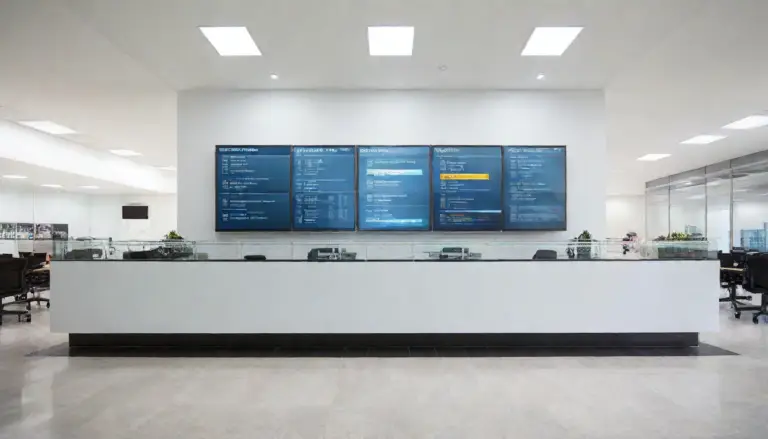Once upon a time, everyone had to show up, in-person, to their favorite local bank branch on a regular basis to conduct a financial transaction. Whether in the lobby, through the drive-up window or via an ATM, even after direct deposit became wide-spread, “going to the bank” was a routine errand for the American household. Today, this is simply not the case. In business and profitability terms, regular visits to a branch lobby is part of a bygone era and some financial institutions have been slow to respond to this change and struggle to evolve their branches into relevant tools that grow revenue. The successful “branch of the future”, however, has envisioned a very different lobby than that of today.
The Role of the Lobby
Since the financial crisis, banks in the US have closed over 10,000 branches at the rate of three a day. The reasons for this have been less about hardship and more about rethinking the needs today’s bank and credit union customers have for their financial institution. With so many functions available digitally, your customers – even your happy, loyal customers – don’t come into your branch for fun. They are there for a purpose which they want to complete and go on with their day. Your lobby needs to meet those relevant needs – just like your web page and mobile app need to successfully fulfill their functions – and if your customers needs aren’t met and they become frustrated with the process, they will look elsewhere. Unlike the digital experience, however, your lobby can make a big impression by offering your customers more than what they were hoping for. You can add value to your customers’ experiences in your branch with a strategic, relevant and well-designed lobby.
- The relationship experience: Your lobby lets you keep the personal and emotional connection with your customers while providing digital, self-service options.
- Consumer engagement: Don’t simply replicate what you already offer online, instead enhance your value propositions through connections that can’t happen digitally.
Three Trends in Lobby Transformation
Some of the big-names in nation-wide and international banking are playing around with dramatic new design ideas. From portable pop up branches (PNC Bank) to bank coffee shop crossovers (Capital One) many have these three changes in common:
1. Reduced retail footprint
Lobbies today need less space as fewer people are coming in to use them. Instead, smaller and better designed spaces are opening up where customers can easily navigate to what they need. When was the last time your lobby had a facelift? Although redesigns can be expensive, if you focus on how you want your lobby to function, the right partner can help you achieve it.
- Inviting, well-designed, modern look
- Providing a sense of legitimacy and security
- Reassuring to your customers that their finances are safe
- Designed to help foot traffic flow through, making it easy to find what is needed
2. Focused more heavily on providing financial advice
You already know how active your customers are with your online and mobile banking options. If they’re anything like most of the country, then you’ve seen the trend grow year after year. What they can’t get online in a meaningful and personal way is advice. From millennials looking for help buying a car or home to Gen Xers negotiating investments to Baby Boomers planning for retirement, they are looking for a trusted advisor they can be loyal to throughout their lifetimes. Use your lobby to focus less on transactions and more on the experience of being your bank’s customer. Provide well-trained experts to meet these needs while at the same time offering automated self-service for those who want it.
3. Tellers out from behind desks
Portable devices and instant EMV issuance mean tellers can move around and interact with people so not everyone is stuck standing in a line. They have more freedom to act as brand ambassadors and problem solvers. These frontline employees are the faces of your brand. Empower them and watch loyalty grow. And don’t forget that digital signage isn’t just for rate board compliance. Provide the right amount of automation using digital signage to help alleviate wait times when tellers are required and get your customer’s needs met as quickly as possible. Make no mistake; the individual branch isn’t going anywhere. Routing customers into automated channels may be more cost-effective, but it doesn’t eliminate the usefulness of lobby experience. Despite leaps and bounds in online and mobile banking, the need for a geographically convenient center for financial assistance remains. Read more about the changing relationship between consumers and financial institutions in the Executive Brief: Branch of the Future.






